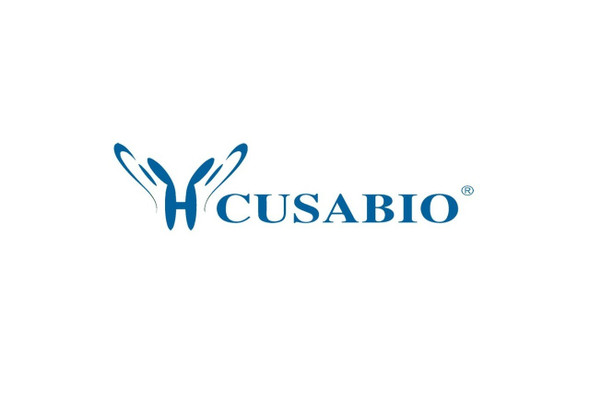Cusabio Human Recombinants
Recombinant Human Notch homolog 2 N-terminal-like protein B (NOTCH2NLB) | CSB-BP3322HU
- SKU:
- CSB-BP3322HU
- Availability:
- 3 - 7 Working Days
Description
Recombinant Human Notch homolog 2 N-terminal-like protein B (NOTCH2NLB) | CSB-BP3322HU | Cusabio
Alternative Name(s): /
Gene Names: NOTCH2NLB
Research Areas: others
Organism: Homo sapiens (Human)
AA Sequence: LQCRDGYEPCVNEGMCVTYHNGTGYCKCPEGFLGEYCQHRDPCEKNRCQNGGTCVAQAMLGKATCRCASGFTGEDCQYSTSHPCFVSRPCLNGGTCHMLSRDTYECTCQVGFTGKECQWTDACLSHPCANGSTCTTVANQFSCKCLTGFTGQKCETDVNECDIPGHCQHGGICLNLPGSYQCQCLQGFTGQYCDSLYVPCAPSPCVNGGTCRQTGDFTFECNCLPETVRRGTELWERDREVWNGKEHDEN
Source: Baculovirus
Tag Info: N-terminal 10xHis-tagged and C-terminal Myc-tagged
Expression Region: 26-275aa
Sequence Info: Full Length of Mature Protein
MW: 31.3 kDa
Purity: Greater than 85% as determined by SDS-PAGE.
Relevance: Human-specific protein that promotes neural progenitor proliferation and evolutionary expansion of the brain neocortex by regulating the Notch signaling pathway (PubMed:29856954, PubMed:29856955, PubMed:29561261). Able to promote neural progenitor self-renewal, possibly by down-regulating neuronal differentiation genes, thereby delaying the differentiation of neuronal progenitors and leading to an overall final increase in neuronal production (PubMed:29856954, PubMed:29856955). Acts by enhancing the Notch signaling pathway via two different mechanisms that probably work in parallel to reach the same effect (PubMed:29856954, PubMed:29856955). Enhances Notch signaling pathway in a non-cell-autonomous manner via direct interaction with NOTCH2 (PubMed:29856954). Also promotes Notch signaling pathway in a cell-autonomous manner through inhibition of cis DLL1-NOTCH2 interactions, which promotes neuronal differentiation (PubMed:29856955).
Reference: "Human-specific NOTCH2NL genes affect Notch signaling and cortical neurogenesis." Fiddes I.T., Lodewijk G.A., Mooring M., Bosworth C.M., Ewing A.D., Mantalas G.L., Novak A.M., van den Bout A., Bishara A., Rosenkrantz J.L., Lorig-Roach R., Field A.R., Haeussler M., Russo L., Bhaduri A., Nowakowski T.J., Pollen A.A., Dougherty M.L. Haussler D. Cell 173:1356-1369(2018)
Storage: The shelf life is related to many factors, storage state, buffer ingredients, storage temperature and the stability of the protein itself. Generally, the shelf life of liquid form is 6 months at -20?/-80?. The shelf life of lyophilized form is 12 months at -20?/-80?.
Notes: Repeated freezing and thawing is not recommended. Store working aliquots at 4? for up to one week.
Function:
Involvement in disease:
Subcellular Location:
Protein Families:
Tissue Specificity:
Paythway:
Form: Liquid or Lyophilized powder
Buffer: If the delivery form is liquid, the default storage buffer is Tris/PBS-based buffer, 5%-50% glycerol. If the delivery form is lyophilized powder, the buffer before lyophilization is Tris/PBS-based buffer, 6% Trehalose, pH 8.0.
Reconstitution: We recommend that this vial be briefly centrifuged prior to opening to bring the contents to the bottom. Please reconstitute protein in deionized sterile water to a concentration of 0.1-1.0 mg/mL.We recommend to add 5-50% of glycerol (final concentration) and aliquot for long-term storage at -20?/-80?. Our default final concentration of glycerol is 50%. Customers could use it as reference.
Uniprot ID: P0DPK3
HGNC Database Link: N/A
UniGene Database Link: N/A
KEGG Database Link: N/A
STRING Database Link: N/A
OMIM Database Link: N/A










